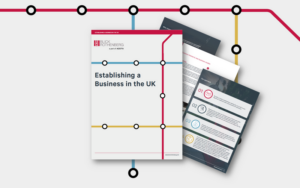Salaried Member Rules: What you need to know
If you’re a member of a LLP, you need to watch out to avoid being caught unexpectedly by the Salaried Member Rules
Mark Eade from our Financial Services team looks at the rules in more detail and explains what you need to know
What are the Salaried Member Rules?
Before the Salaried Member Rules were introduced, individual members of a Limited Liability Partnership (LLP) may have been taxed as if they were partners in a traditional partnership, even if they were engaged on terms closer to an employee.
This means that as a member of a trading LLP the individual members were taxed as if they were carrying on a trade directly for Income Tax purposes.
The main tax advantages that the Salaried Member Rules are trying to counter is that, as a member of a partnership:
- Pay-as-you-earn (PAYE) does not apply
- There is no employers’ National Insurance Contribution (NIC) on amounts payable to the individual member of the LLP. Employers’ National Insurance is currently charged at 13.8%.
An individual member of the LLP caught by the Salaried Member Rules is effectively treated as an employee for the purposes of Income Tax. This means PAYE and employers’ National Insurance will be due.
The Salaried Member Rules are made up of three conditions, where all three conditions are met an individual will be treated as an employee. To be clear, if one condition is failed, then the Salaried Member Rules should not apply. The three conditions are:
Condition A – Disguised salary
It is reasonable to expect that at least 80% of the total amount payable by the LLP in respect of the member’s performance for services for the LLP in his capacity as a member of the LLP will be disguised salary.
An amount would be considered a disguised salary if it is:
- Fixed
- Variable, but is varied without reference to the overall amount of the profit or losses of the LLP
- It is not, in practice, affected by the overall profits or losses of the LLP.
If the amount payable to the member of the LLP is contingent/worked out in reference to the profits of the LLP, then condition A is not met.
Condition B – Significant influence
The mutual rights and duties of the individual members of the LLP and of the LLP and its members do not give the member significant influence over the affairs of the LLP itself.
This is tested looking at the duties each member performs in running the business of the LLP. According to HMRC the following are considered significant influences:
- Deciding the LLP’s area of business, strategy decisions, formulating a business plan, marketing strategy, key financial decisions
- Staffing decisions, appointment of staff, assigning roles, appointment of new partners.
For Financial Conduct Authority (FCA) regulated clients, HMRC’s view is that holding the individual’s regulatory status may not on its own be decisive in determining whether a partner has significant influence for the purposes of Condition B to be met. FCA-approval can be a contributing factor in any decision but must be scrutinised and considered along with any other relevant facts.
Where an individual has significant influence and control, they will fail condition B.
Condition C – Capital contribution
The third condition is if the member’s contribution to the LLP is less than 25% of the total amount of the disguised salary from the LLP in the tax year concerned.
This is the amount of capital the member has contributed. It does not include undrawn profits.
This is to test whether a member has a genuine financial risk, based on the success of the business.
Where a member contributes a sum equal to or greater than 25% of the expected disguised salary, they will fail condition C and will not be within the scope of the Salaried Member Rules.
What action should you be taking?
It is important to consider these rules if you are thinking of incorporation as an LLP, or indeed currently operating with an LLP environment. Each member of an LLP needs to consider the application of each test in turn.
If you are an existing LLP and there have been changes to your partnership, number of members, or capital contribution it is important to consider whether these changes could impact the Salaried Member Rules.
How we can help
Our Financial Services team are well placed to help advise on the application of the Salaried Member Rules and have a wealth of experience working with LLPs and their members.
If you like to discuss your specific circumstances in more detail or have any further questions, please contact Mark Eade using the form below.
Or, if you would like to discover more of our financial services insights, please visit our Financial Services Hub.
Contact Mark

You may also be interested in

AI is a support for businesses but not a solution

Labour’s plans won’t scratch the surface of the tax gap










